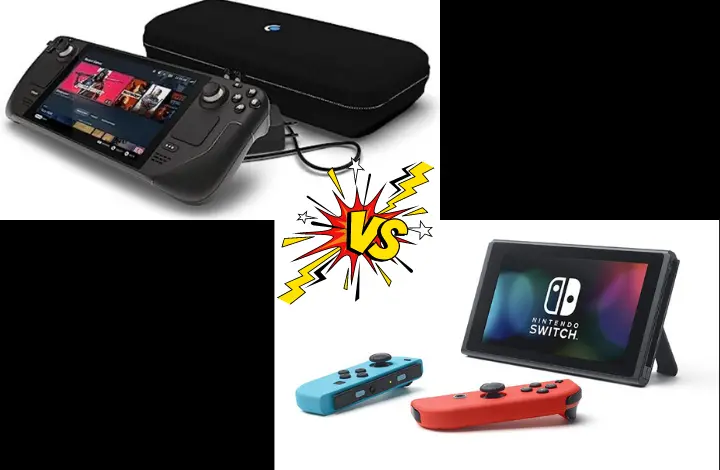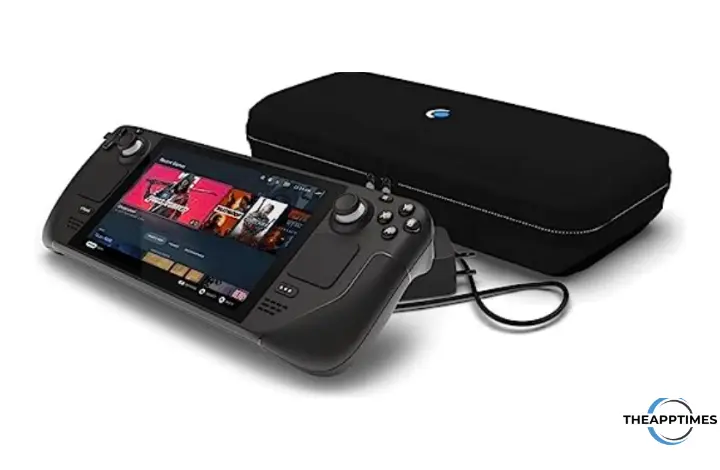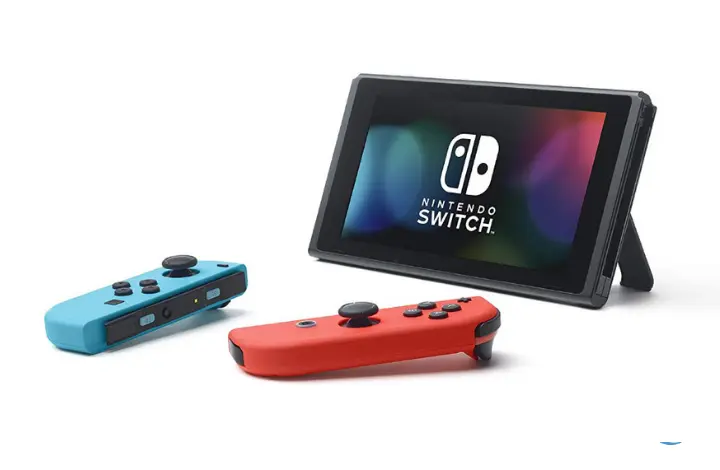In the world of handheld gaming consoles, two major players have emerged as the go-to choices for gamers: Nintendo Switch and Valve’s Steam Deck. In today’s article, we check out the perks each console offers to determine which one reigns supreme. We’ll compare the specifications, performance, control options, game libraries, and pricing of the Steam Deck vs Nintendo Switch to help you make an informed decision.
Steam Deck vs Nintendo Switch: Specs Comparison

Let’s start by comparing the specifications of the Steam Deck and Nintendo Switch.
The Steam Deck features an AMD Aerith APU system-on-chip, while the Nintendo Switch is equipped with the NVIDIA Tegra X1 system-on-chip.
In terms of memory, the Steam Deck boasts 16GB of LPDDR5 RAM, while the Nintendo Switch has 4GB of LPDDR4 RAM.
In terms of storage, the Steam Deck offers options of 64GB eMMC, 256GB NVMe SSD, or 512GB NVMe SSD, along with external microSD card support.
On the other hand, the Nintendo Switch comes with either 32GB or 64GB of internal eMMC storage, expandable via microSD or game cartridges.
When it comes to displays, the Steam Deck features a 7-inch 1280×800 IPS LCD touchscreen, while the Nintendo Switch offers a 6.2-inch 1280×720 IPS LCD touchscreen (on most models) or a 7-inch 1280×720 OLED touchscreen (on the OLED model).
In terms of connectivity, the Steam Deck supports Bluetooth 5.0, 802.11ac Wi-Fi, USB-C 3.2 Gen 2, and a 3.5mm headphone jack. The Nintendo Switch, on the other hand, features Bluetooth 4.1, 802.11ac Wi-Fi, USB-C, a 3.5mm headphone jack, and two Joy-Con connectors.
Steam Deck vs Nintendo Switch: Performance Comparison

When it comes to performance, the Steam Deck outshines the Nintendo Switch by a significant margin. The Steam Deck’s powerful hardware allows it to run games like Street Fighter 6 and Cyberpunk 2077 smoothly. The Nintendo Switch may struggle with more demanding titles like The Legend of Zelda: Tears of the Kingdom. The Steam Deck’s AMD Aerith APU and 16GB of RAM provide a substantial boost in performance compared to the Nintendo Switch’s NVIDIA Tegra X1 chip and 4GB of RAM.
One area where the Nintendo Switch does have an advantage is battery life. The standard models of the Switch offer anywhere between 2.5 and 6.5 hours of gameplay. The OLED model extends that to between 4.5 and 9 hours.
On the other hand, the Steam Deck’s battery life may not even last 2 hours when playing intensive 3D games. It’s important to note that the Steam Deck is designed to be plugged in whenever possible, making it less ideal for long trips without access to power.
Storage capacity is another factor to consider. The Steam Deck offers various storage options. This includes the 64GB eMMC base model, which may fill up quickly considering the size of modern games.
On the other hand, the Nintendo Switch’s internal storage may also be limiting, but it can be expanded using microSD cards or physical game cartridges.
Control Options and Design

Both the Steam Deck and Nintendo Switch come with similar input schemes. For instance, the twin analog sticks, face buttons, shoulder buttons, and triggers.
The Steam Deck offers a more traditional controller layout, the Nintendo Switch’s Joy-Con inputs are detachable, allowing for wireless or replacement options.
In terms of local multiplayer, the Nintendo Switch has the upper hand with its TV dock and built-in stand for tabletop viewing.
The Steam Deck, while capable of local multiplayer, does not come with a built-in stand and requires additional accessories like cables or docks to connect it to a TV or monitor.
One standout feature of the Steam Deck is its twin trackpads. It offers more precise control for strategy and FPS games.
Additionally, the Steam Deck’s PC-like design allows for compatibility with mouse and keyboard inputs. This provides a wider range of control options compared to the Nintendo Switch.
Game Libraries and Exclusives
When it comes to game libraries, the Nintendo Switch has a significant advantage. It has an extensive collection of first-party titles and exclusive franchises like Mario, Zelda, and Pokemon. These exclusive titles are not available on the Steam Deck. This makes the Nintendo Switch the go-to choice for fans of these beloved franchises.
However, the Steam Deck offers access to the vast library of PC titles on Steam, including both verified and non-verified games. While some non-verified games may require additional tweaking, the compatibility list for the Steam Deck continues to expand.
The Nintendo Switch requires a subscription to Nintendo Switch Online for online play and access to classic NES, SNES, and Game Boy titles.
On the other hand, the Steam Deck does not have an inherent subscription requirement, providing more flexibility in terms of online play.
Steam Deck vs Nintendo Switch: Pricing and Affordability
In terms of pricing, the Steam Deck starts at $399, making it more expensive than the Nintendo Switch’s base model. However, considering that the Steam Deck offers a full handheld gaming PC experience, the price becomes more reasonable.
The Steam Deck also offers higher-tier storage options at a higher cost, with the 256GB and 512GB models providing more space for games and multimedia content.
On the Nintendo Switch side, the pricing varies depending on the model. The OLED model is priced at $345.99, the launch model at $299.99, and the handheld-only Switch Lite at $199.99.
These prices make the Nintendo Switch a more affordable option, especially for those on a tighter budget or looking for a console for children.
Conclusion
In conclusion, both the Steam Deck and Nintendo Switch have their own strengths and weaknesses. The Steam Deck offers superior performance, a wider range of control options. It provides access to a vast library of PC games.
On the other hand, the Nintendo Switch boasts an extensive collection of exclusive titles. It also has better battery life, and a more affordable price point.
If you’re a fan of Nintendo franchises like Mario, Zelda, and Pokemon, the Nintendo Switch is the obvious choice. Nintendo is also perfect if you prefer a console with longer battery life for extended gaming sessions on the go.
However, if you value performance, versatility, and access to a larger variety of games, the Steam Deck is the handheld console that reigns supreme in 2023.
Ultimately, the decision between the Steam Deck and Nintendo Switch comes down to personal preferences, gaming priorities, and budget considerations. Whichever console you choose, both offer unique gaming experiences that cater to different needs and preferences.
Check out the Steam Deck and Nintendo Switch on Amazon.
Leave a Reply